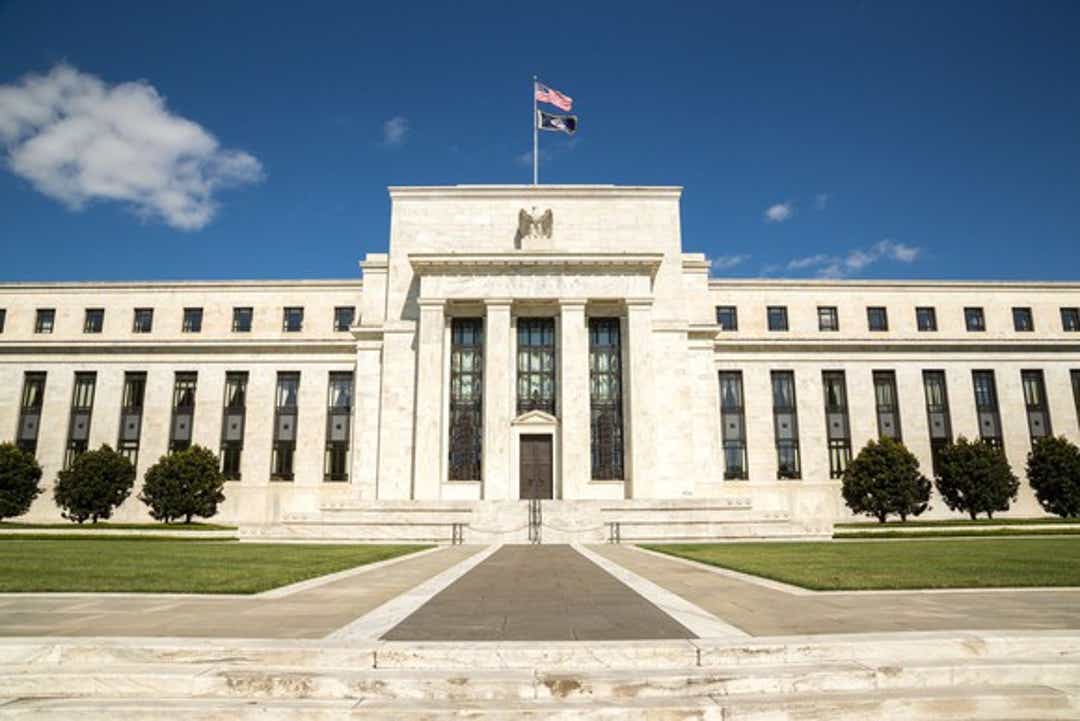WASHINGTON-- A not-too-hot, not-too-cold economy is keeping the Fed on the sidelines.
The Federal Reserve held its key interest rate steady Wednesday and signaled it plans to stay on hold in 2020 unless a worsening economy prompts a significant change in its outlook.
In a statement after a two-day meeting, the Fed reaffirmed its new wait-and-see approach after lowering its federal fund rate by a quarter percentage point three times since late July to a range of 1.5% to 1.75% amid trade jitters and sluggish growth abroad.
Its latest forecast underscores that Fed officials foresee the economy notching modest 2% growth next year that sidesteps recession but also falls short of the faster gains that would require a resumption of the four rate hikes the Fed approved in 2018 to head off a potential surge in inflation.
"Both the economy and monetary policy right now are in a good place," Fed Chair Jerome Powell said at a news conference.
Stocks closed mildly higher following the Fed’s decision, with the Dow Jones industrial average adding 30 points to end at 27,911. The yield on the benchmark 10-year Treasury note fell to 1.80%.

While the Fed’s median estimate shows no rate cuts or hikes next year, some divisions remain on its 17-member policymaking committee, with four officials projecting one rate hike. But that’s relatively harmonious compared to the sharp splits the past few months, when some officials favored faster cuts and others preferred hikes.
It's virtually certain the Fed will steer clear of rate increases that could roil the economy in 2020, an election year that has Trump seeking a second term, says economist Paul Ashworth of Capital Economics. Trump has repeatedly badgered the Fed and Powell for not pushing down rates more sharply. At a new conference Wednesday, Powell reiterated that it would take a "significant increase in inflation" for the Fed to raise rates.
The Fed reckons it will have to lift its key rate gradually in the years ahead as economic growth throttles back slightly, by just a quarter point in both in 2021 and 2022, though eight policymakers envision faster increases. Over the longer term, the Fed estimates the rate will be 2.5%, unchanged from its September estimate.
The Fed’s statement repeated that “the labor market remains strong” and “economic activity has been rising at a moderate rate.” It also noted that household spending has risen “at a strong pace,” while business investment and exports “remain weak,” a dichotomy that has persisted since late 2018. In a sign the Fed sees the economy as more stable, it removed its late October assertion that "uncertainties" about its outlook remain.
The Fed is struggling to shape its view amid a volatile U.S. trade war with China. Tariffs on a final $160 billion tranche of mostly consumer goods from China, such as cell phones and laptops, is scheduled to take effect Sunday, though analysts are expecting an 11th hour “phase 1” agreement that heads off the duties or delays the levies while talks continue. That deal is expected to include additional Chinese purchases of American agricultural goods.
Any pact, however, would keep in place tariffs on $360 billion in Chinese imports as the two sides continue to negotiate a broader agreement that addresses deeper conflicts. That’s expected to leave a cloud of uncertainty that has combined with weak growth in Europe and China to hurt business confidence and investment and mire manufacturing in a prolonged slump.
Those troubles, along with meager inflation, prompted the Fed’s three rate decrease from July to October, an abrupt reversal of last year’s rate-hike campaign. The unusual “insurance” cuts were designed to ward off a potential recession even while the economy slowed but remained on solid footing.
The Fed moves seemed to bolster the economy and stock market, with job growth picking up to a robust average monthly pace of 205,000 the past three months. There have been other positive developments, including the expectations of a trade deal. And 10-year Treasury yields moved back above three-month rates, reversing an “inverted yield curve” that typically signals a recession down the road.
After its late October meeting, the Fed signaled it would stay on hold unless events forced a “material” change in its outlook.
Fed policymakers on Wednesday estimated the economy will grow 2.2% this year, 2% in 2020 and 1.9% in 2021, unchanged from their prior forecast. They figure the unemployment rate, at a 50-year low of 3.5%, will edge up to 3.6% by the end of this year but drop back to 3.5% by the end of 2020, slightly lower than their September projections.
And the officials still see inflation rising but staying below the 2% benchmark. They continue to believe overall consumer price increases will rise from 1.3% annually in October to 1.5% by year-end and 1.9% by the end of 2020. And they estimate a core measure that strips out volatile food and energy items will stay at 1.6% by year-end – below their previous 1.8% estimate -- before rising to 1.9% by the end of 2020.
Contributing: Jessica Menton
The gloomy rich: Millionaires sour on U.S. economy, with their views at the lowest level since before the recession
Business - Latest - Google News
December 12, 2019 at 02:07AM
https://ift.tt/2t7HWw5
Fed stands pat on rates, signals no cuts, or hikes, in 2020 - USA TODAY
Business - Latest - Google News
https://ift.tt/2Rx7A4Y
Shoes Man Tutorial
Pos News Update
Meme Update
Korean Entertainment News
Japan News Update
Bagikan Berita Ini














0 Response to "Fed stands pat on rates, signals no cuts, or hikes, in 2020 - USA TODAY"
Post a Comment